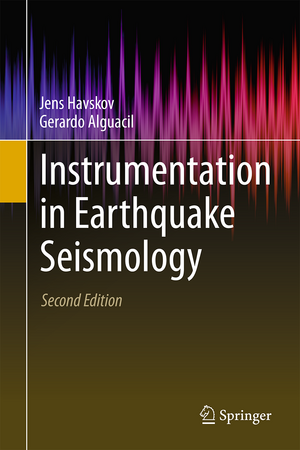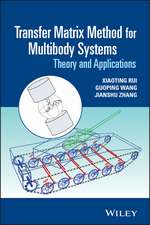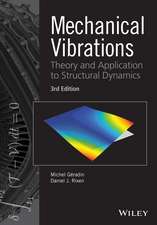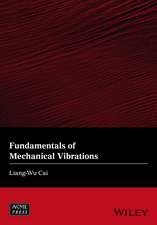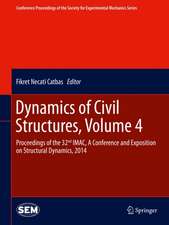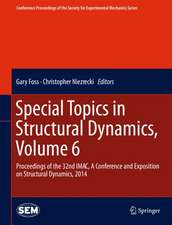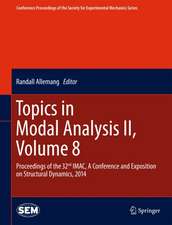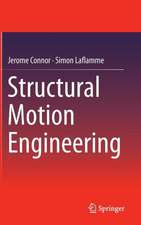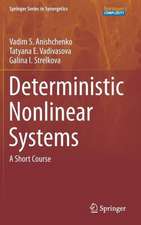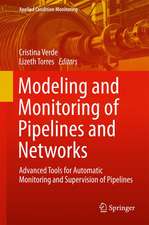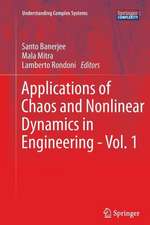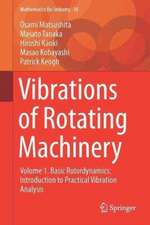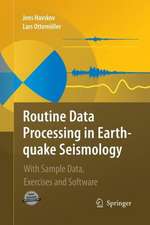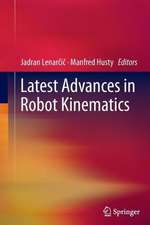Instrumentation in Earthquake Seismology
Autor Jens Havskov, Gerardo Alguacilen Limba Engleză Hardback – 28 noi 2015
• Choosing and installing equipment for seismic stations
• Designing and setting up seismic networks and arrays
• Maintaining and calibrating seismic instruments
It also provides detailed descriptions of the following:
• Seismic sensors
• Digitizers
• Seismic recorders
• Communication systems
• Software used for seismic station and networks
In this second edition, new seismic equipment is presented and more comprehensive sections on topics like MEMS accelerometers, sigma-delta AD converters, dynamic range discussion and virtual networks have been included.
This book is primarily intended for seismologists, engineers and technicians working with seismological instruments. It combines practical “know-how” with sufficient theory to explain the basic principles, making it also suitable for teaching students the most important aspects of seismic instrumentation.
The book also gives a current overview of the majority of instruments and instrument manufacturers on the market, making it easy to compare the capability of instruments from different sources.
SEISAN software was used for several examples in the book. This widely extended seismic analysis software is freely available from the University of Bergen website.
The content of this book draws on the authors’ (a seismologist and a physicist) combined experience of working in this field for more than 35 years.
| Toate formatele și edițiile | Preț | Express |
|---|---|---|
| Paperback (2) | 392.75 lei 6-8 săpt. | |
| SPRINGER NETHERLANDS – 23 aug 2014 | 392.75 lei 6-8 săpt. | |
| Springer International Publishing – 23 aug 2016 | 703.52 lei 6-8 săpt. | |
| Hardback (1) | 606.23 lei 38-45 zile | |
| Springer International Publishing – 28 noi 2015 | 606.23 lei 38-45 zile |
Preț: 606.23 lei
Preț vechi: 787.31 lei
-23% Nou
Puncte Express: 909
Preț estimativ în valută:
116.01€ • 124.05$ • 96.72£
116.01€ • 124.05$ • 96.72£
Carte tipărită la comandă
Livrare economică 14-21 aprilie
Preluare comenzi: 021 569.72.76
Specificații
ISBN-13: 9783319213132
ISBN-10: 331921313X
Pagini: 413
Ilustrații: XVI, 413 p.
Dimensiuni: 155 x 235 x 25 mm
Greutate: 0.74 kg
Ediția:2nd ed. 2016
Editura: Springer International Publishing
Colecția Springer
Locul publicării:Cham, Switzerland
ISBN-10: 331921313X
Pagini: 413
Ilustrații: XVI, 413 p.
Dimensiuni: 155 x 235 x 25 mm
Greutate: 0.74 kg
Ediția:2nd ed. 2016
Editura: Springer International Publishing
Colecția Springer
Locul publicării:Cham, Switzerland
Public țintă
ResearchCuprins
Introduction.- Seismic Sensors.- Seismic Noise.- Analog to Digital Converter.- Seismic Recorders.- Correction for Instrument Response.- Seismic Stations.- Seismic Networks.- Seismic Arrays.- Calibration and Testing.- Appendices.- Index.
Notă biografică
Jens Havskov is researcher in the Department of Earth Science at the University of Bergen.
Gerardo Alguacil is researcher in the Institute of Geophysics at the University of Granada.
Gerardo Alguacil is researcher in the Institute of Geophysics at the University of Granada.
Textul de pe ultima copertă
This work provides an up-to-date overview of modern instruments used in earthquake seismology as well as a description of theoretical and practical aspects of seismic instrumentation. The main topics are:
• Choosing and installing equipment for seismic stations
• Designing and setting up seismic networks and arrays
• Maintaining and calibrating seismic instruments
It also provides detailed descriptions of the following:
• Seismic sensors
• Digitizers
• Seismic recorders
• Communication systems
• Software used for seismic station and networks
In this second edition, new seismic equipment is presented and more comprehensive sections on topics like MEMS accelerometers, sigma-delta AD converters, dynamic range discussion and virtual networks have been included.
This book is primarily intended for seismologists, engineers and technicians working with seismological instruments. It combines practical “know-how” with sufficient theory to explain the basic principles, making it also suitable for teaching students the most important aspects of seismic instrumentation.
The book also gives a current overview of the majority of instruments and instrument manufacturers on the market, making it easy to compare the capability of instruments from different sources.
SEISAN software was used for several examples in the book. This widely extended seismic analysis software is freely available from the University of Bergen website.
The content of this book draws on the authors’ (a seismologist and a physicist) combined experience of working in this field for more than 35 years.
• Choosing and installing equipment for seismic stations
• Designing and setting up seismic networks and arrays
• Maintaining and calibrating seismic instruments
It also provides detailed descriptions of the following:
• Seismic sensors
• Digitizers
• Seismic recorders
• Communication systems
• Software used for seismic station and networks
In this second edition, new seismic equipment is presented and more comprehensive sections on topics like MEMS accelerometers, sigma-delta AD converters, dynamic range discussion and virtual networks have been included.
This book is primarily intended for seismologists, engineers and technicians working with seismological instruments. It combines practical “know-how” with sufficient theory to explain the basic principles, making it also suitable for teaching students the most important aspects of seismic instrumentation.
The book also gives a current overview of the majority of instruments and instrument manufacturers on the market, making it easy to compare the capability of instruments from different sources.
SEISAN software was used for several examples in the book. This widely extended seismic analysis software is freely available from the University of Bergen website.
The content of this book draws on the authors’ (a seismologist and a physicist) combined experience of working in this field for more than 35 years.
Caracteristici
First comprehensive book, as second edition covering all aspects of instrumentation in earthquake seismology First general users' manual in the field available as a second edition Deals primarily with seismic sensors, their response functions and how to calibrate and optimize the instruments
Recenzii
From the reviews:
“Authors have managed remarkably well, creating an excellent textbook on seismological instrumentation. … The book is directed to anyone working in earthquake seismology … . The book also may be useful to hardware servicemen and hardware designers … valuable for outlining the basic principles and most common instrumentation properties and constitutes a ready reference source. … the book will retain its value for many years and should find its place on a shelf at every institution that maintains a modern seismic station, array or network.” (Pawel Wiejacz, Pure and Applied Geophysics, Vol. 166, 2009)
“Authors have managed remarkably well, creating an excellent textbook on seismological instrumentation. … The book is directed to anyone working in earthquake seismology … . The book also may be useful to hardware servicemen and hardware designers … valuable for outlining the basic principles and most common instrumentation properties and constitutes a ready reference source. … the book will retain its value for many years and should find its place on a shelf at every institution that maintains a modern seismic station, array or network.” (Pawel Wiejacz, Pure and Applied Geophysics, Vol. 166, 2009)
